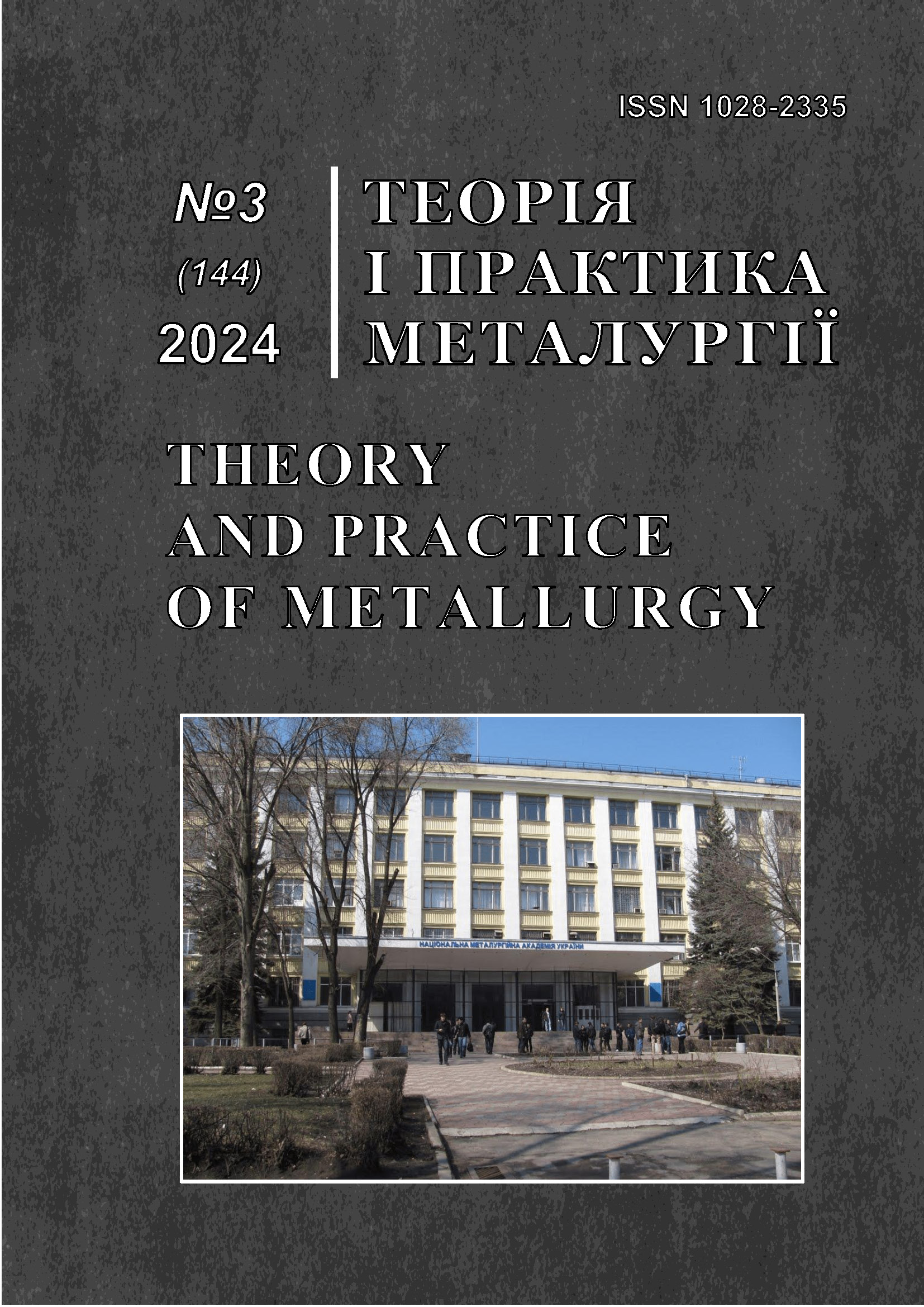Study of the impact of blast furnace process intensification by increasing the blast flow rate on the operating parameters of the blast supply and heating system
DOI:
https://doi.org/10.15802/tpm.3.2024.06Keywords:
hot-blast stoves, air blast, temperature of air blast, blast flow, pressure lossAbstract
The objective of the study is to investigate the effect of increasing the air blast flow rate on the operating parameters of the blast supply and heating system for the conditions of a blast furnace with a useful volume of 1754 m3. Methods. The authors used numerical methods for calculations of fuel combustion, heat and mass transfer, and gas dynamics to determine the operating parameters of the air blast supply and heating system at the "turbo-blower - hot-blast stoves -hot blast pipeline - blast furnace" sections. Results. It has been determined that ensuring a temperature of 1350 °C under the dome of hot-blast stoves requires the enrichment of blast furnace gas with natural gas to a content of 5.6 % natural gas in the mixture. Heating of the air blast flow rate, which is raised by 18.5 %, requires an increase of the heat output of the hot blast stoves up to the maximum and leads to a decrease of the hot blast air temperature by 30 °C. At the same time, the heat losses of the hot blast pipeline in the section "hot-blast stoves -blast furnace" almost do not change, while the flue gas flow rate and pressure losses in the flue gas path of the hot-blast stoves increase significantly. Since the evacuation of flue gases from the hot-blast stoves occurs mainly due to the pressure of the combustion components, it is recommended to use a centralized air supply with an air fan of higher capacity. The scientific novelty of the research lies in the revealed relationship between the air blast flow rate and the operational parameters of the heating system and its supply to the blast furnace. The practical value of the research includes the developed recommendations for ensuring the operation of the air blast supply and heating system under conditions of increasing consumption.
References
Gantenberg, M., Schaub, E., Allmannsdörfer, R., & Münzer, J. (2013). Comparison of different hot blast stove designs. Stahl und Eisen. 133 (9), 33
Zhang, F., Li, X., & Hu, Z. (2018). Research on high efficiency energy conversion technology for modern hot blast stove. Energy Technology 2018: Carbon Dioxide Management And Other Technologies, 133-152. http://doi.org/10.1007/978-3-319-72362-4_12
Gres, L. P., Karpenko, S. A., & Mazov, S. V. (2012). Povyshenie energoeffektivnosti nagreva domennogo dutia. Metallurgicheskaia i Gornorudnaia Promyshlennost (7), 19-20
Patent No. 38746, Ukraine, C 21 B 9/10. (2009). Nasadka domennoho povitronahrivacha. Bul. No. 1
Zhang, Q., & Tang, Y. (2024). Numerical study of the influence of regenerator structure on the performance of hot blast stoves. Metal, 14 (8), 869 http://doi.org/10.3390/met14080869
Patent No. 61274, Ukraine, C 21 B 9/10. (2011). Povitronahrivach domennoi pechi. Bul. No.13
Patent No. 77201, Ukraine, C 21 B 9/02. (2006). Sposib rekonstruktsii povitronahrivachiv z vbudovanoiu kameroiu horinnia. Bul. No. 11
Qi, F., Liu, Z., Yao, C., & Li, B. (2015). Numerical study and structural optimization of a top combustion hot blast stove. Advances in Mechanical Engineering, 7 (2). http://doi.org/10.1155/2014/709675
Zhang, Q., Chen, L., Ma, X., & Zhao, C. (2021). Numerical study of combustion and air supply characteristics and structural optimization of top combustion hot blast stoves. ISIJ International, 61 (1), 62-70. http://doi.org/10.2355/isijinternational.ISIJINT-2020-119
Tovarovskyi, I. H. (2014). Normatyvna otsinka vplyvy parametriv domennoi plavky na vytraty kosu ta produktyvnist. Fundamentalni ta Prykladni Problemy Chornoi Metalurhii, 28, 117-131
Gres, L. P. (2021). Povyshenie energoeffektivnosti nagreva domennogo dutia. Dnipro
Gres, L. P., Karpenko, S. A., & Milenina, A. E. (2012). Teploobmenniki domennykh pechei. Dnepropetrovsk: Porogi
Timoshpolskii, V. I. & Gubinskii, V. I. (Eds.) (2007). Metallurgicheskie pechi. Teoriia i raschety. Vol. 2. Minsk: Belarus. nauka
Normy tekhnologicheskogo proektirovaniia domennykh tcekhov. ONTTU 1-1-94. (1994). Dnepropetrovsk, UkrGipromez
Downloads
Published
How to Cite
Issue
Section
License
Copyright (c) 2024 Gres L.P., Gupalo O.V., Yeromin O.O., Radchenko Yu.M., Sulimenko S.Ye.

This work is licensed under a Creative Commons Attribution 4.0 International License.
Authors retain copyright of the published papers and grant to the publisher the non-exclusive right to publish the article, to be cited as its original publisher in case of reuse, and to distribute it in all forms and media. Articles will be distributed under the Creative Commons Attribution 4.0 International (CC BY 4.0) licence.
Authors can enter the separate, additional contractual arrangements for non-exclusive distribution of the published paper (e.g., post it to an institutional repository or publish it in a book), with an acknowledgement of its initial publication in this journal.




